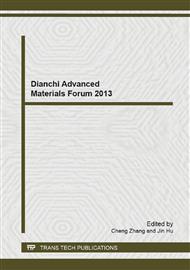p.136
p.142
p.146
p.150
p.154
p.159
p.165
p.169
p.173
Numerical Simulation of Pre-Crack Propagation in ZrB2-SiC-AlN Ceramics Subjected to Thermal Shock
Abstract:
The present work examines the pre-indented crack propagation in ZrB2-SiC-AlN ceramics subjected to thermal shock under different temperature differences. A cohesive force model is applied according to the shape and characteristics of the crack in the indentation - quenching experiments. A dimensionless parameter is introduced to characterize the effect of depth on thermal stress which considers the cracks propagate along both the surface and the depth direction. The modified numerical results are 11.3%, 16.6%, 20.8% 27.1% and 64.6% at the quenching temperature differences of 240°C, 280°C, 320°C and 360°C, respectively, which are in good agreement with the experimental results.
Info:
Periodical:
Pages:
154-158
Citation:
Online since:
November 2013
Authors:
Price:
Сopyright:
© 2014 Trans Tech Publications Ltd. All Rights Reserved
Share:
Citation:


